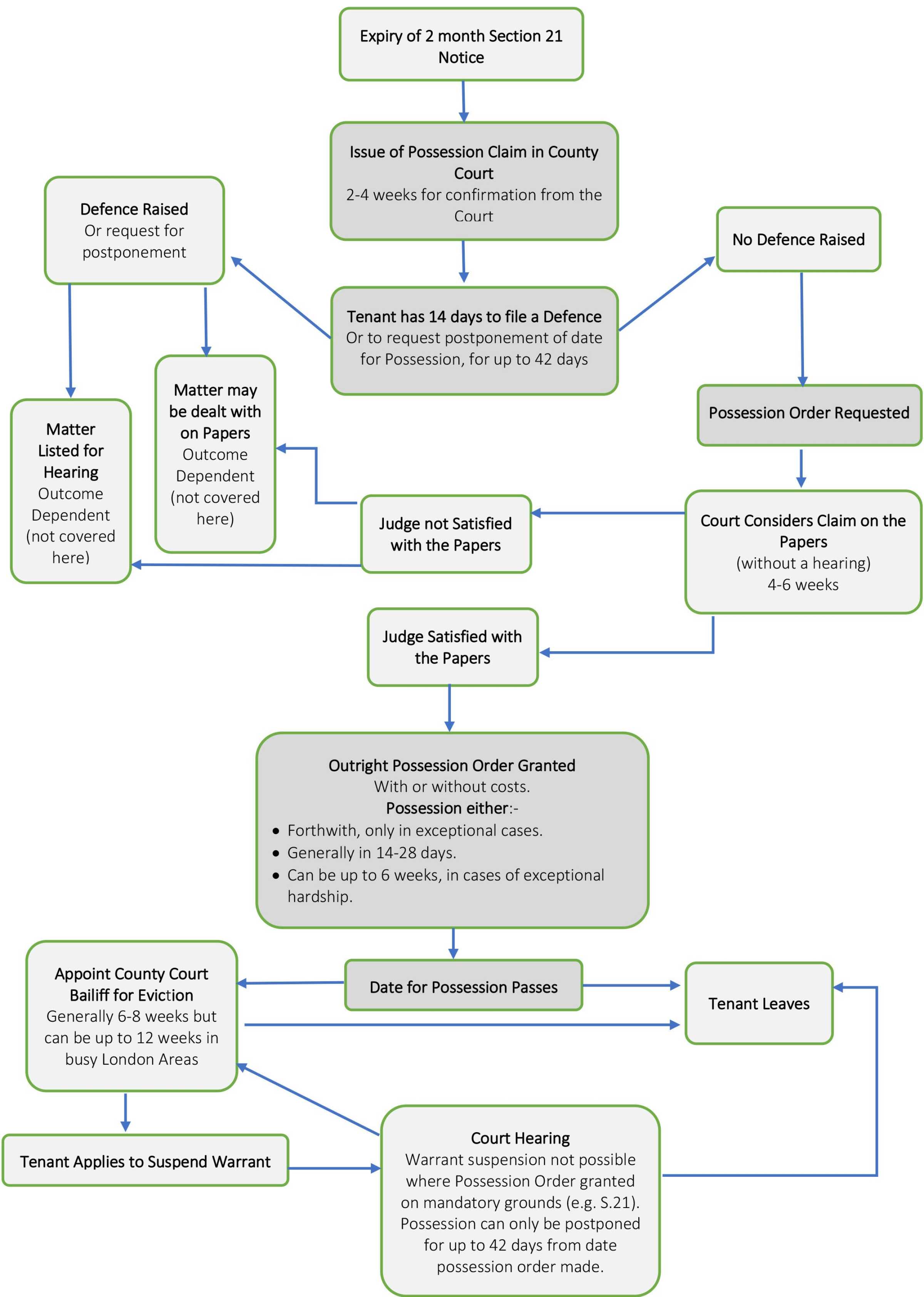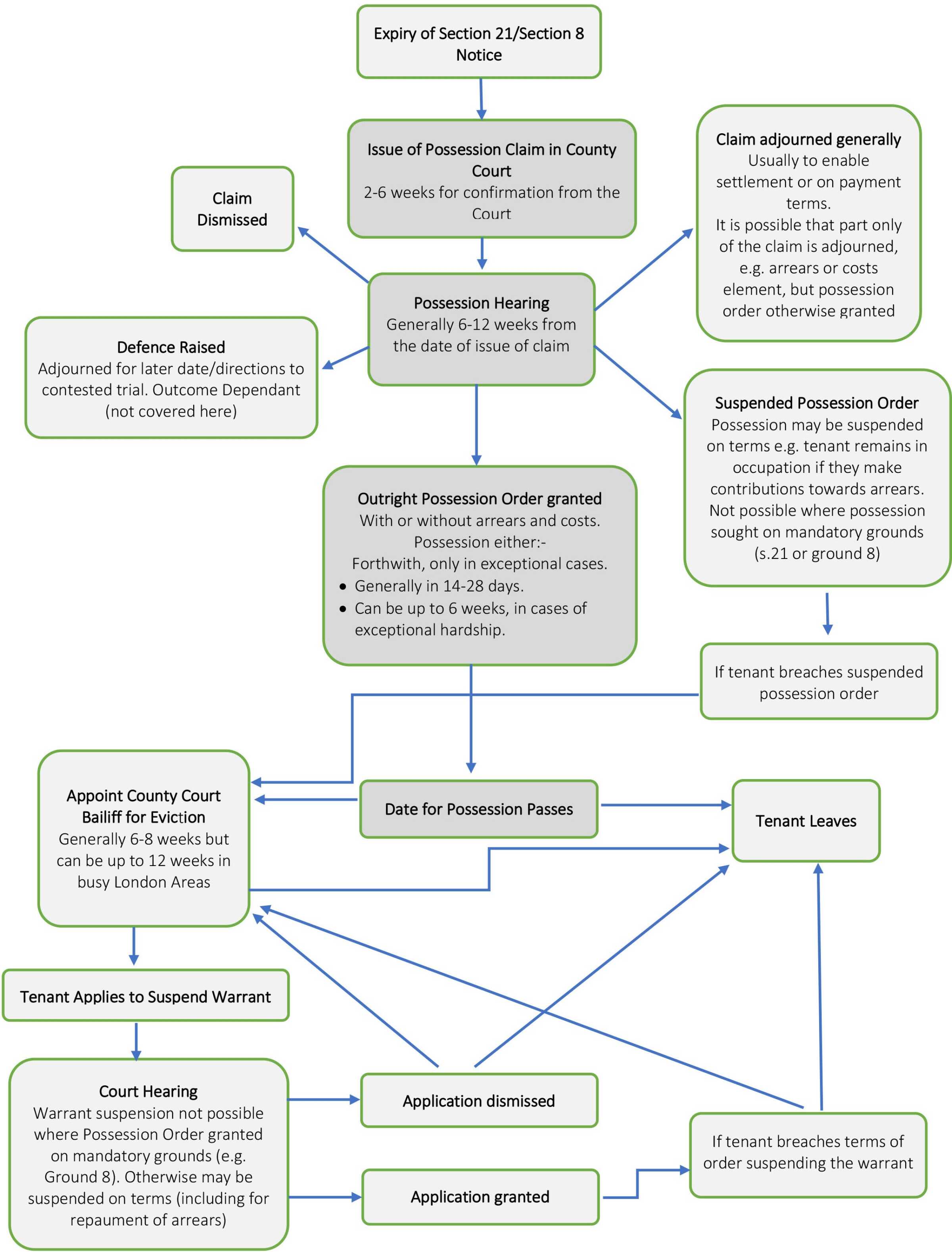The Accelerated and Standard Possession Procedures
2nd November 2022
Get in touch today
Call 01435 897297
Email info@kdllaw.com
2nd November 2022

Following on from our Legal Update last week, which provided the grounds and notice periods where possession is sought of properties let under assured and assured shorthold tenancies (ASTs) pursuant to Schedule 2 to the Housing Act 1988, this week we look at the legal processes to obtain possession should the tenant fail to vacate once the notice period has expired.
The need for Court proceedings
Where residential property is occupied, a landlord cannot legally take possession of the property without having obtained an order for possession from the Court, which must then be executed either by the County Court bailiff or High Court Enforcement Officers by way of a formal eviction.
A landlord who takes possession of occupied residential property other than by execution of an order for possession risks committing a criminal offence of unlawful eviction under the Protection from Eviction Act 1977 (“PEA 1977”), which could result in prosecution, fines and/or civil damages. This applies unless the occupier is an ‘excluded occupier’ within the meaning of Section 3A of the PEA 1977. A defence is available where a landlord believed, and had reasonable cause to believe, that the occupier had ceased to reside at the premises. However, given the severe consequences of taking possession of residential property without obtaining an order for possession from the Court, extreme caution should be taken before assuming a tenant has vacated, particularly in the absence of the keys being returned or any other unequivocal act of surrender of the tenancy from the tenant.
There are two different Court processes to obtain an order for possession, known as the Accelerated Procedure and the Standard Procedure. Which procedure applies will depend on the type of notice served and whether a claim for rent arrears is to be made in the action. The broad processes are set out below, including anticipated timescales (which are approximate only and entirely dependent on the relevant Court and its availability at any given time).
The Accelerated Procedure is only available where possession is sought following expiry of a non-fault based Section 21 Notice, and where the landlord has a signed copy of the tenancy agreement.
A Section 21 Notice can only be served to seek possession of a property let on an AST. Our Legal Update here provides information on the restrictions affecting when a Section 21 Notice can be served, including the information/documents to be provided to a tenant under an AST before a Section 21 Notice can be lawfully served.
Under the Accelerated Procedure, the possession claim will be dealt with on the papers without a Court hearing, unless the tenant files a defence to the claim or the judge raises a query on the papers.
There can be no claim for rent arrears where the Accelerated Procedure is used.

The Standard Procedure must be used where possession is sought :
Under any of the fault-based grounds following expiry of a Section 8 Notice (see here for a recap of the grounds and notice periods);
Of property let on an assured tenancy (as those tenancies can only be terminated following service of a Section 8 Notice);
Following expiry of a Section 21 Notice, but the claim is to include a money judgment in respect of rent arrears or no signed copy of the tenancy agreement is held;
Under the Standard Procedure, there must be a Court hearing. Typically this means that it will take longer for an order for possession to be made than under the Accelerated Procedure which does not require a Court hearing. However, in the cases of 1 and 2 above, it is likely that the notice period will be shorter than the 2 months required for a Section 21 Notice, meaning that a possession claim can be commenced with the Court quicker in those cases following expiry of the Section 8 Notice, than in cases where a Section 21 Notice has been served. Therefore, in some cases, there may be very little time difference between the Accelerated and Standard procedures, depending on the type of notice served, the relevant notice period and the Court’s availability to list the hearing.

The above does not cover the circumstances in which permission may be sought from the County Court to enforce the possession order through the High Court, for an eviction to be carried out by High Court Enforcement Officers rather than the County Court bailiff (which is typically a quicker, albeit more expensive, process).
Conclusion
Whilst the restrictions imposed on evictions and possession orders being made during the COVID-19 pandemic have long since been lifted, we are still seeing severe delays with the Courts dealing with possession claims and evictions, presumably whilst the Courts and bailiffs catch up with the backlogs caused as a result of the pandemic.
Given the legal and procedural hurdles that can catch out even the most experienced landlords when it comes to dealing with possession claims, it is imperative to take specialist legal advice (preferably before the Section 21 or Section 8 Notice is served), to avoid any unnecessary delays which might be caused by any hiccups in procedure.
If you have any queries in relation to this week’s Legal Update, please contact a member of the team on 01435 897297 or info@kdllaw.com.
Disclaimer
This legal update is provided free of charge for information purposes only; it does not constitute legal advice and should not be relied on as such. No responsibility for the accuracy and/or correctness of the information and commentary set out in the article, or for any consequences of relying on it, is assumed or accepted by any member of KDL Law or by KDL Law as a whole.
If you have received this update in error or wish to unsubscribe from future updates then please email us at info@kdllaw.com.
Sign up to receive FREE regular Legal Updates by email